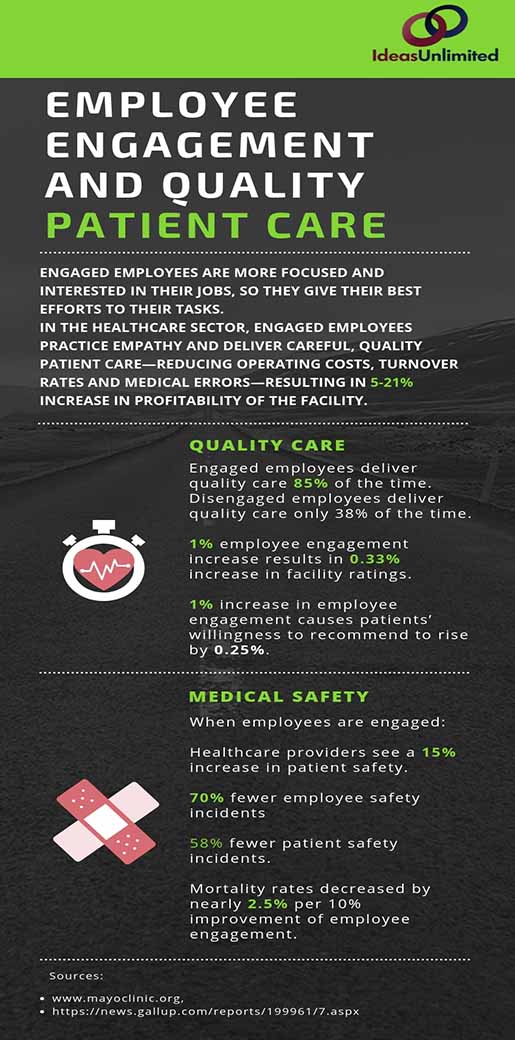The healthcare industry is busy responding to the growing expectations of their patients. Like other evolving industries, this industry is also facing demands of personalized care, convenience, value add-ons and options. Patients now are actively involved in informed decision-making, owing to the influx of online reviews and ratings and self-payments.
Current healthcare consumers research and look for a provider that can consistently provide them a good experience. The significant decrease in funding, rising self-payments, copayments and deductibles, have resulted in a greater demand for finding healthcare options at competitive rates.
Resultantly, healthcare providers are working to create better relations with the patients based on trust and reliability. Studies have shown that long-term patient relations uplift revenue and are directly affected by improved and coordinated care delivered by engaged workers.
Patient Experience
From the point that an individual starts looking for a healthcare service to the time care is delivered, everything constitutes the patient experience. On the basis of this patients decide whether they have been satisfied with the facility or physician’s practice or not.
Positive patient experience is an important goal in itself. Every interaction with the healthcare system adds to the patient experience. This includes their health plans, insurance policy, treatment from doctors, nurses and general hospital staff, laboratories and other healthcare facilities.
Healthcare processes and outcomes such as clinical diagnosis and outcomes, medical advice, and safety practices are the obvious factors that structure a patient’s experience with any health provider. However, another very important set of factors is often neglected during medical services delivery: Communication and Administrative Support Services. Patients expect a service that is not only available but also respectful, convenient, and compliant with their preferences and special needs.

Many CAHPS studies have shown significant results that link
- good communication
- timely appointments and follow ups
- easy access to information, and
- immediate response from the providers
to positive patient experience. Therefore, it is mandatory to look at each aspect of delivery and association between patients and healthcare providers. In order to improve and deliver overall care services to engender positive patient experiences, non-medical staff also has to be trained and motivated to deliver effective support services to the healthcare seeker.
Employee Engagement and Quality of Patient Experience
Quality patient experience and employee engagement are two positive forces that reinforce each other. Among other macro benefits, this cycle also benefits the facility with lower employee turnover, greater patient and employee satisfaction, improved medical processes and systems, and certainly, an improved bottom-line.
Research has shown that employee engagement motivates and develops the current workforce to perform better. All healthcare staff, be it administrative support, general support services, nurses or physicians, needs to be empathetic, professional and efficient. Engagement of employees—at all tiers—influences them to do their best and provide medical care in the most personal and effective manner. In short, employee engagement is an important goal that leads to the achievement of another goal: Quality Patient Experience.
If a patient rates your facility 5 stars for the great care experience they received, then it’s a win-win for all. Researches have shown that organizations with engaged employees report a lower mortality rate around the world. Similarly, the incidence of medical errors also reduces, which is the third largest reason of deaths in US today, after cancer and heart diseases.
Evaluation of a complete healthcare quality picture shows substantial proof that many aspects of non-medical tasks and services are also key determinants of a quality patient experience. When a care seeker reaches out to any healthcare facility, they expect immediate response and effective solutions. Quality interaction with the administrative support team and hospital reception, as first contact points, are as significant as the medical procedures for a positive patient and family experience.
Stress-Free Work Environment
It is not only doctors and nurses who work under pressure in a medical facility, non-medical staff that renders support services is equally taking the physical and mental toll of the work pressure.
Here it is important to understand that employee engagement is a long-term process that can yield customer-focused, profit-generating benefits in the longer run. Thus, it is not a human resources initiative that can be implemented every year or so. In fact, it is a cultural change—strategically embedded motivators that influence the employee’s performance, patient-focus, safety measures, accomplishments, and continuous improvement throughout the year.
One of the main determinants of employee engagement is a stress-free work environment that helps the employee work hard, in an efficient and timely fashion. Such an environment filters unnecessary delays and miscommunications. It fosters cordial coworker relations, teamwork, employee development, and quality patient care. Resultantly, a healthcare facility needs to invest in tools, resources, and trainings that would generate such a conducive environment.
Support staff like receptionists and other administrative support workers, accounts service providers, customer service staff, and technical support staff knit the work pattern and culture in a healthcare organization. Their duties are as vital as those of the medical staff. Their support and coordination for carrying out medical processes and delivering positive patient and family experiences is invaluable.
Patients and families are not very satisfied or cooperative when:
- they are not immediately connected to the right medical staff,
- when their inquiries are not answered satisfactorily, or
- they face problems in clearing payments.
Online and telephone inquiries, data entry and coordination, insurance claims, appointment scheduling, follow ups and feedback, are some of the repetitive, routine tasks that take up a major chunk of your support services employees’ energy and time. These tasks seem very basic but are most crucial in improving patient satisfaction. During busy hours it becomes difficult for administrative support teams to catch up and coordinate with medical staff and patients simultaneously. Similarly, insurance claims, ERM and feedback calls exact a considerable toll on hospital resources and manpower. With multiple insurance plans, multilingual and multiethnic patient groups, it is not easy to multitask and deliver care process timely. Running on tight budgets with several safety and coordination concerns, support services at a healthcare provider need to be most organized, relaxed, and efficient.
You must free up the time and resources for your healthcare administrative support workforce so that they don’t feel trapped or overwhelmed. It is more important to let them focus on core care activities and their specializations. A support services employee who is not overburdened or burned-out will feel more engaged and will endeavor to give personalized advice, directions, and full attention to each case.
What are you waiting for? Make the changes to your set up today so that you are not left behind as the healthcare industry evolves. Overwhelmed? Contact an expert healthcare call center support provider to get a customized solution for your business.









